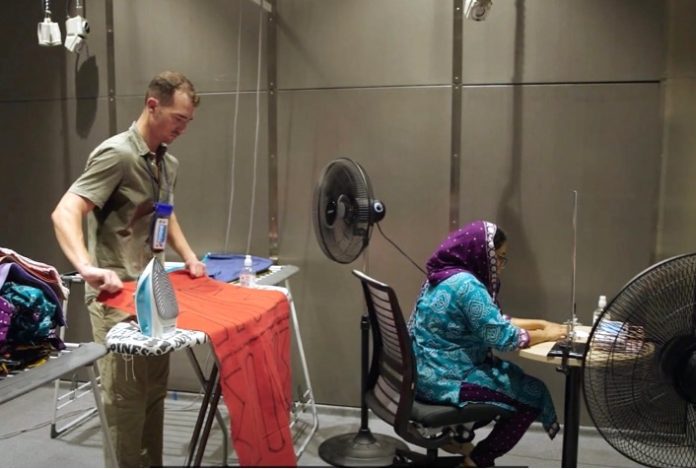Pregnant women are being warned to keep it cool with Sydney researchers linking high heat exposure to complications including preterm birth and low birthweight.
The research is being led by a team from the University of Sydney University’s new Heat and Health Research Incubator (HHRI) which is seeking to better understand the mechanisms through which heat exposure impacts pregnancy outcomes across the world.
Professor Ollie Jay, who is one of the founders of the Faculty of Medicine and Health’s HHRI lab, said pregnant women should avoid extreme hot and humid conditions.
“High body temperatures can lead to negative birth outcomes such as foetal malformations or increased risk of complications,” Prof Jay said.
“The ratio of body surface area to mass is roughly 64 per cent higher in infants than in adults, which means that infants are at greater risk due to more rapid evaporation.”
Extreme heat can lead not only to premature births but also to low birth weights, with studies showing a 16 per cent increase in premature births during heatwaves.
Gynaecologist Louisa Samuels said exposure to extreme heat could cause harm to the mother and foetus.
She said this included reduced blood flow to the placenta, dehydration and inflammatory reactions that can trigger preterm labour.
“High temperatures can be a barrier to their outdoor activities, which can prevent women from engaging in physical activity, and this also results in women not being able to work in hot conditions,” she said.
The HHRI team has launched a research project to address the working conditions of factory workers in the Bangladesh garment industry, where women represent the majority of the workforce.
Prof Jay said they had a dozen sensors in the factory to replicate the same thermal conditions in the lab.
“We will analyse heat stress responses of participants during ironing and sewing tasks and identify the most effective and scalable strategies to keep workers in these types of settings cool, comfortable and productive,” Prof Jay said.
The state-of-the-art climate chamber in the University’s Susan Wakil Health Building was used to simulate working conditions in a garment factory. Photo: The University of Sydney: Sydney debuts new Heat and Health Research Incubator.
Associate Professor Ying Zhang, who is part of the HHRI team, said heat could also increase the risks of chronic conditions such as cardiovascular diseases, renal disease and mental health problems.
“Increasing temperature could bring more infectious diseases like mosquito-borne disease and food-borne disease,” Prof Zhang said, adding that HHRI was focused on developing sustainable cooling strategies to protect vulnerable people exposed to extreme heat conditions.
“There are also actions we can take to reduce the impact of extreme heat on ourselves, such as reducing outdoor activity during hot periods,” he said.
Global Health Action’s Vidhya Venugopal said heat exposure in the workplace exceeded the accepted threshold for safe physical work for 71 per cent of women.
She said inadequate sanitation in parts of the world could cause women to restrict their fluid intake, despite thirst or heat signals, to avoid the need for a toilet.
She said this could lead to dehydration and cause acute kidney injuries and urinary tract infections.


